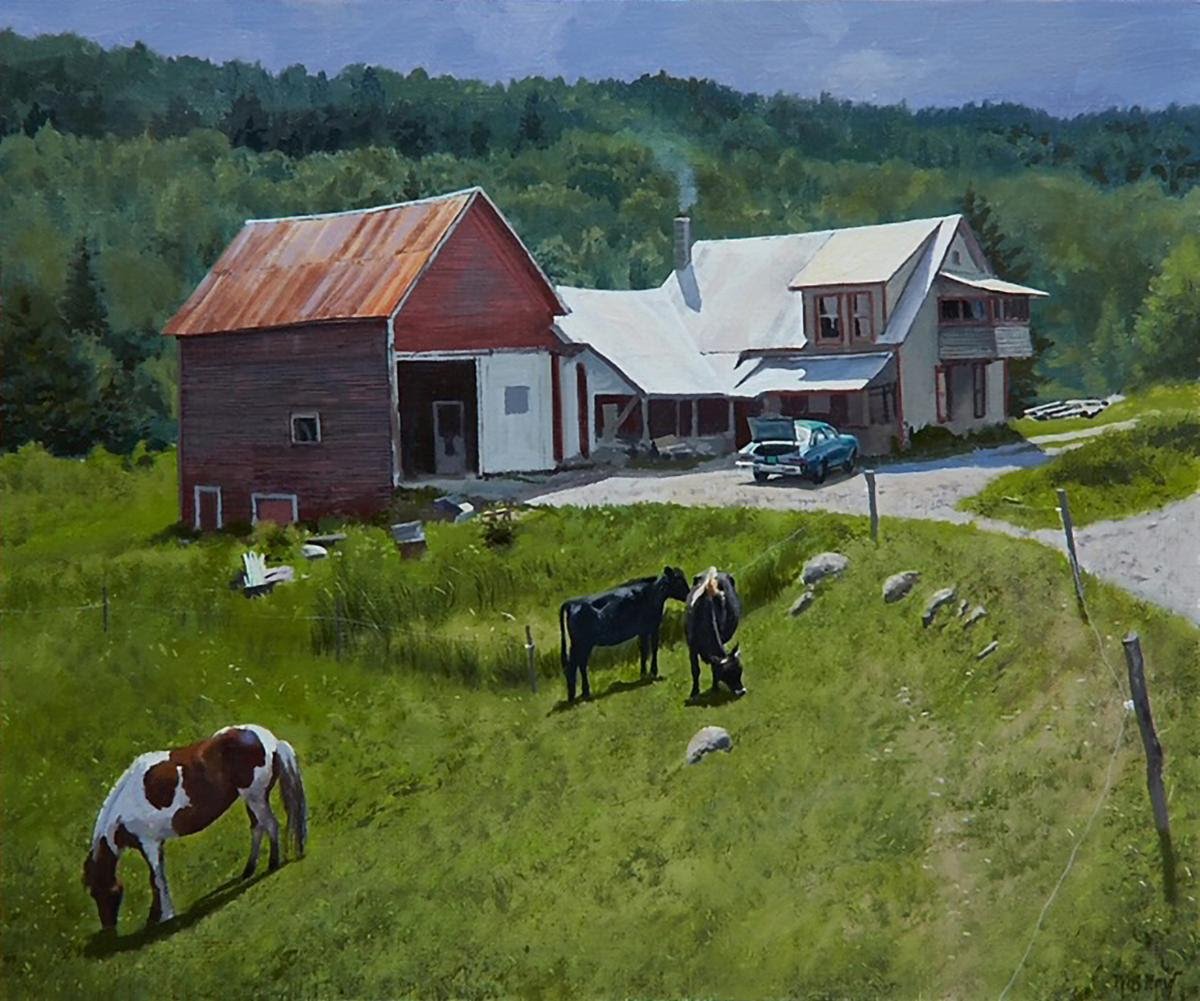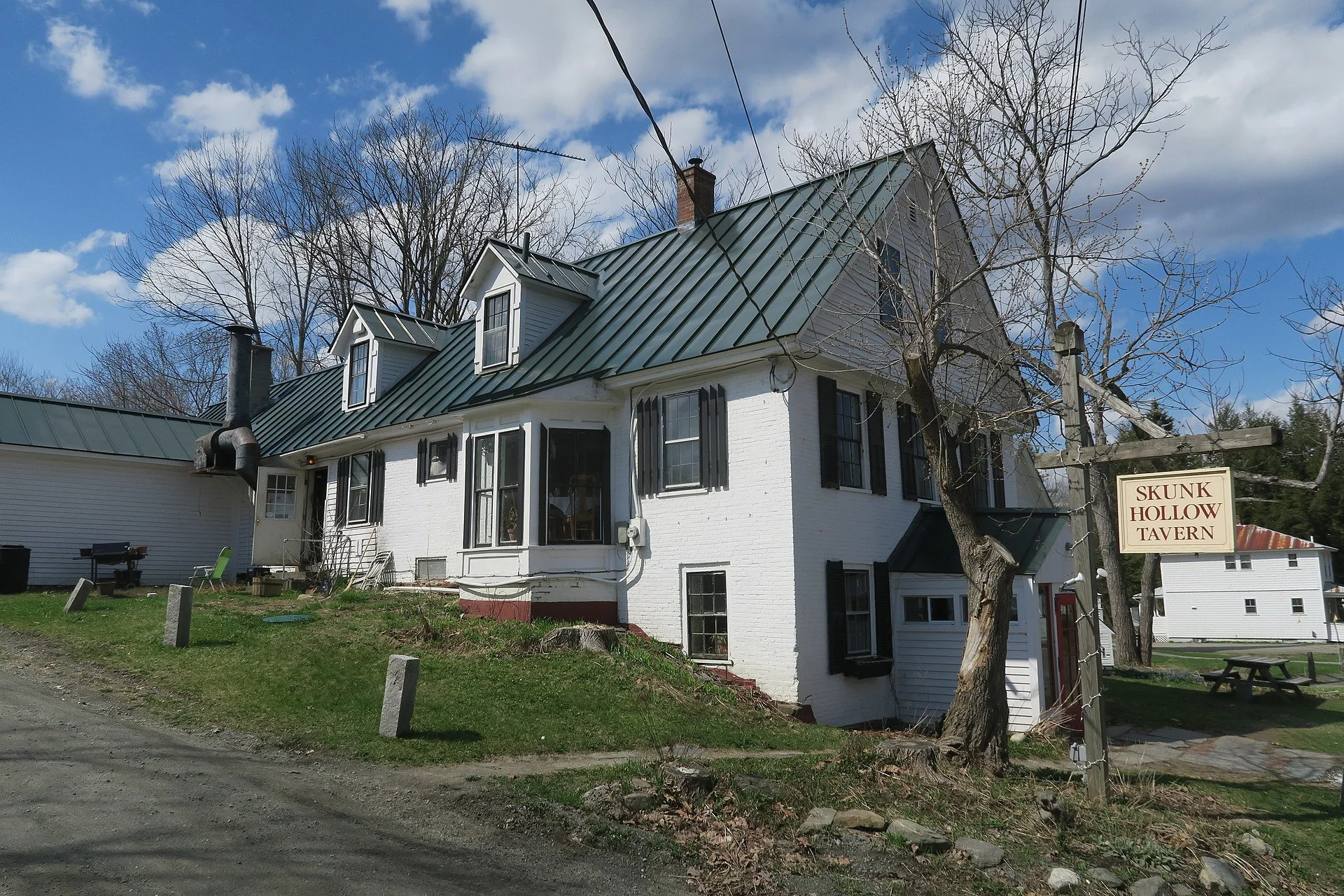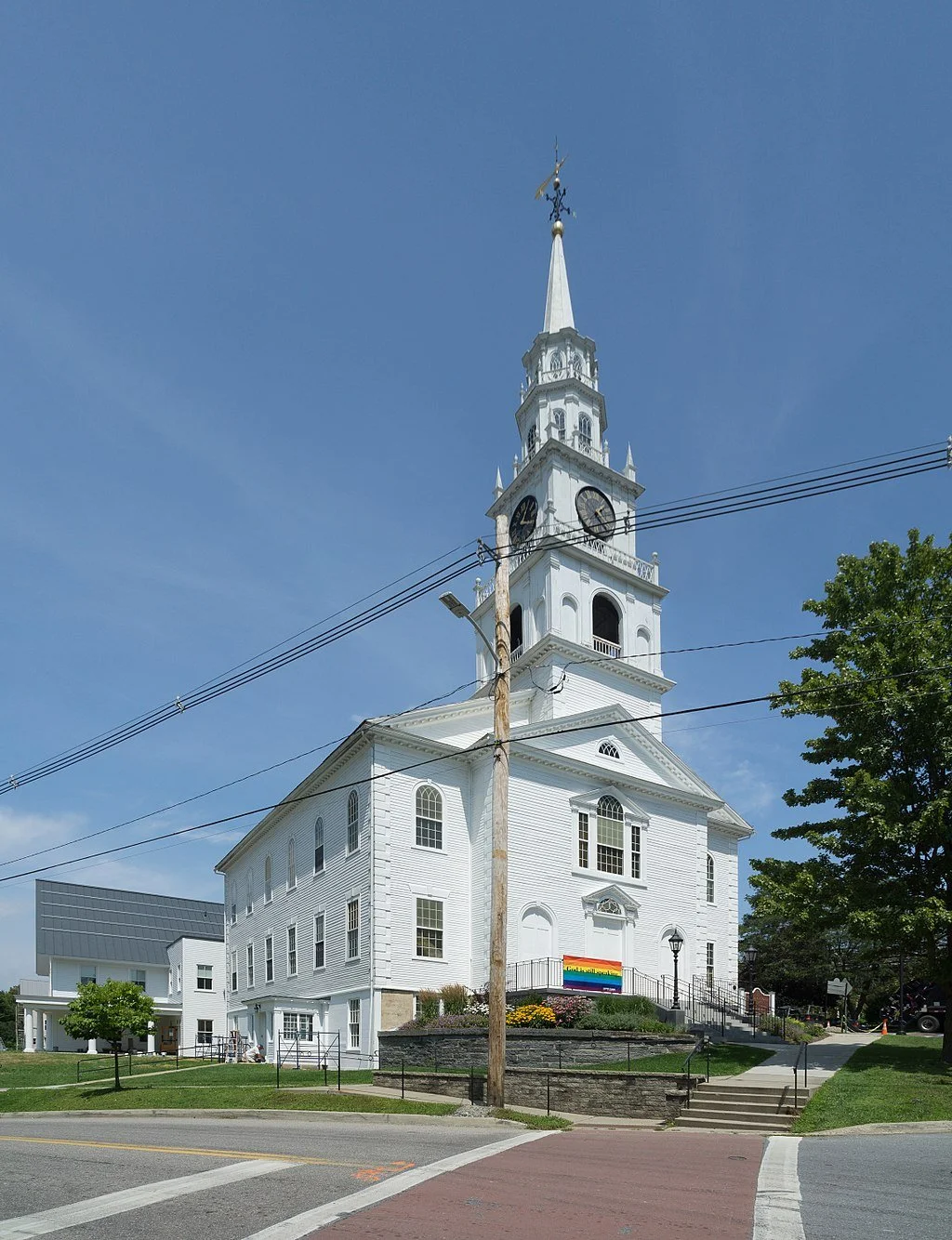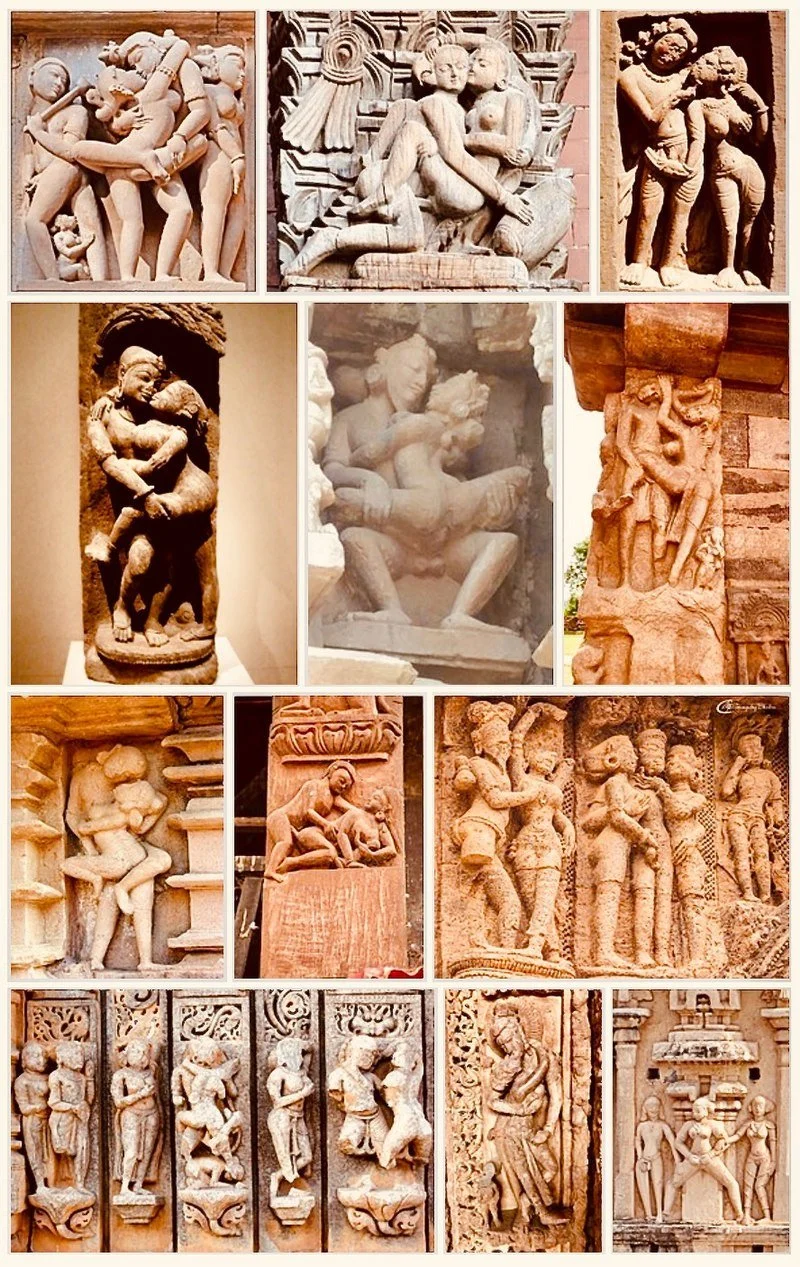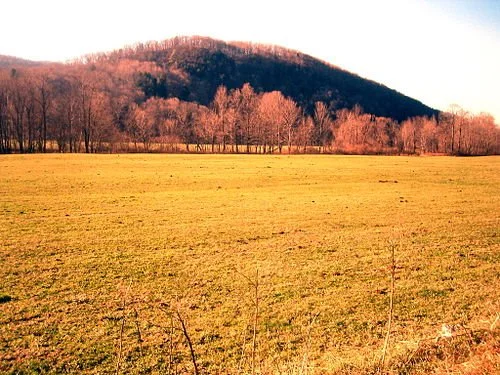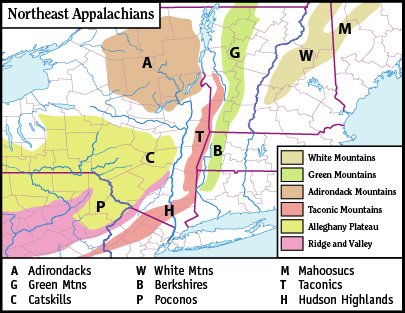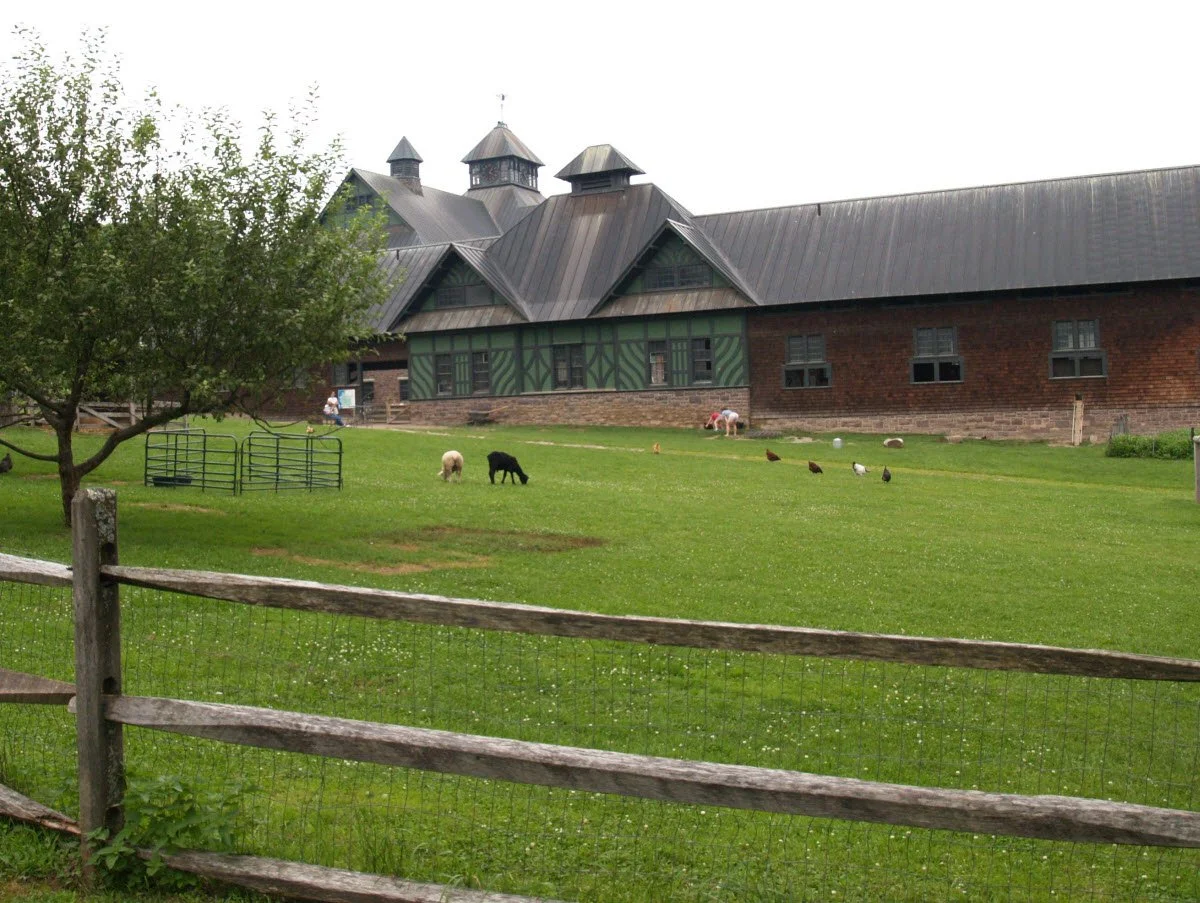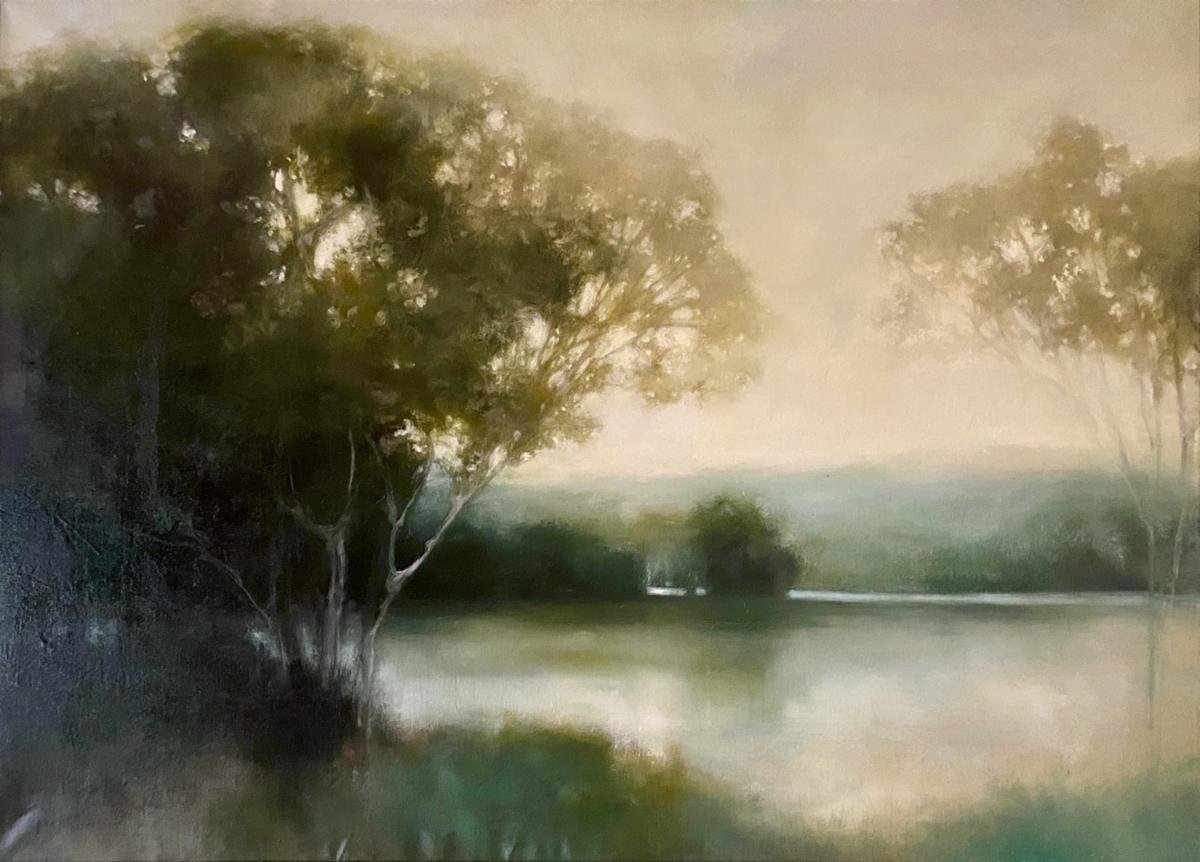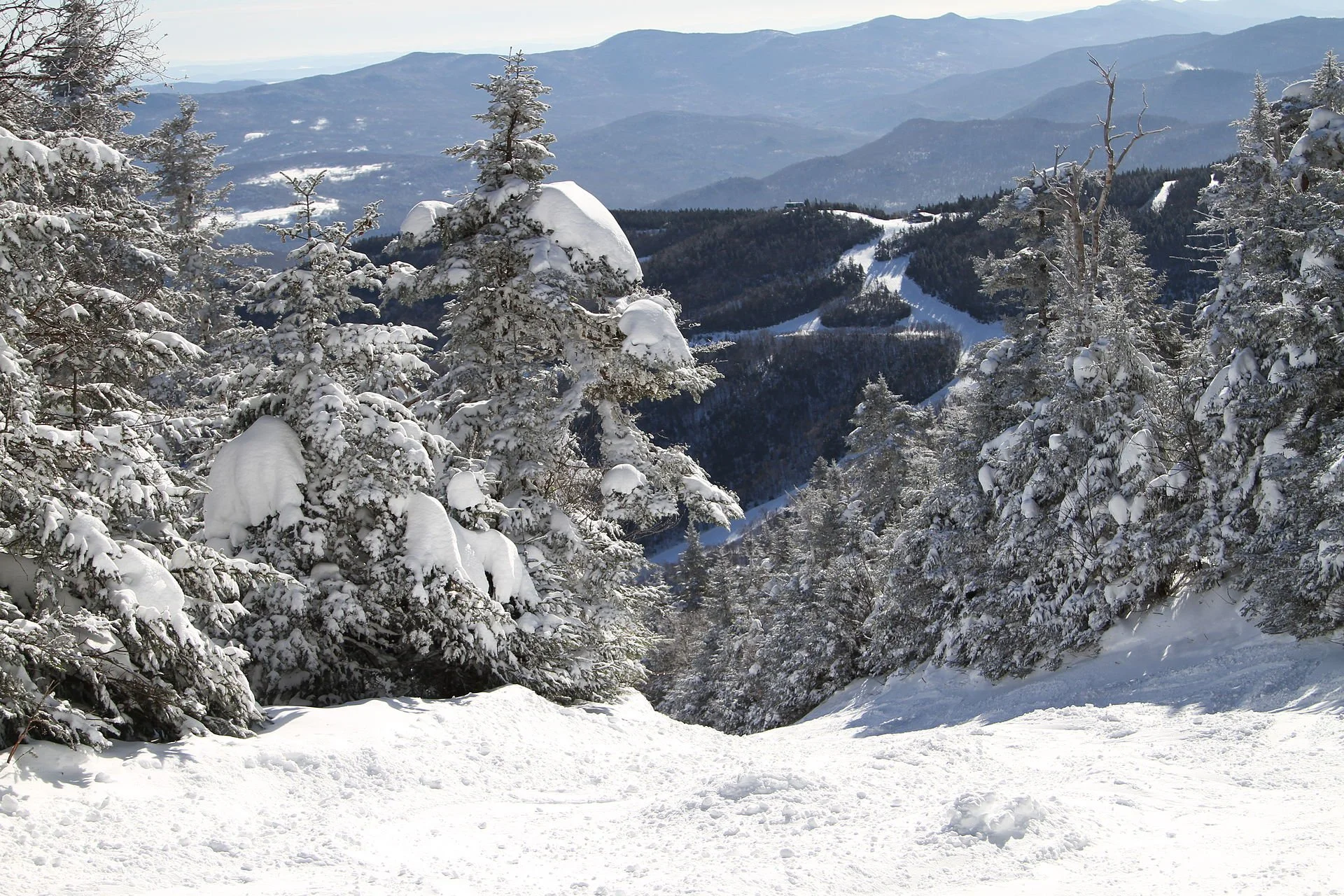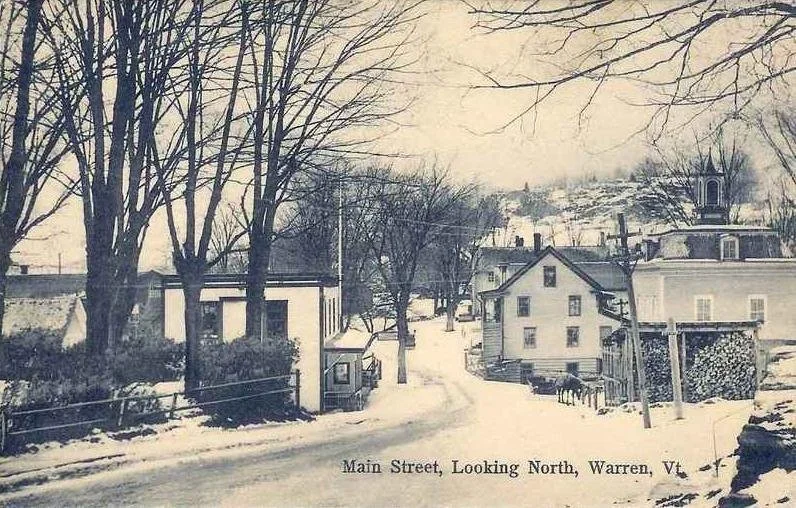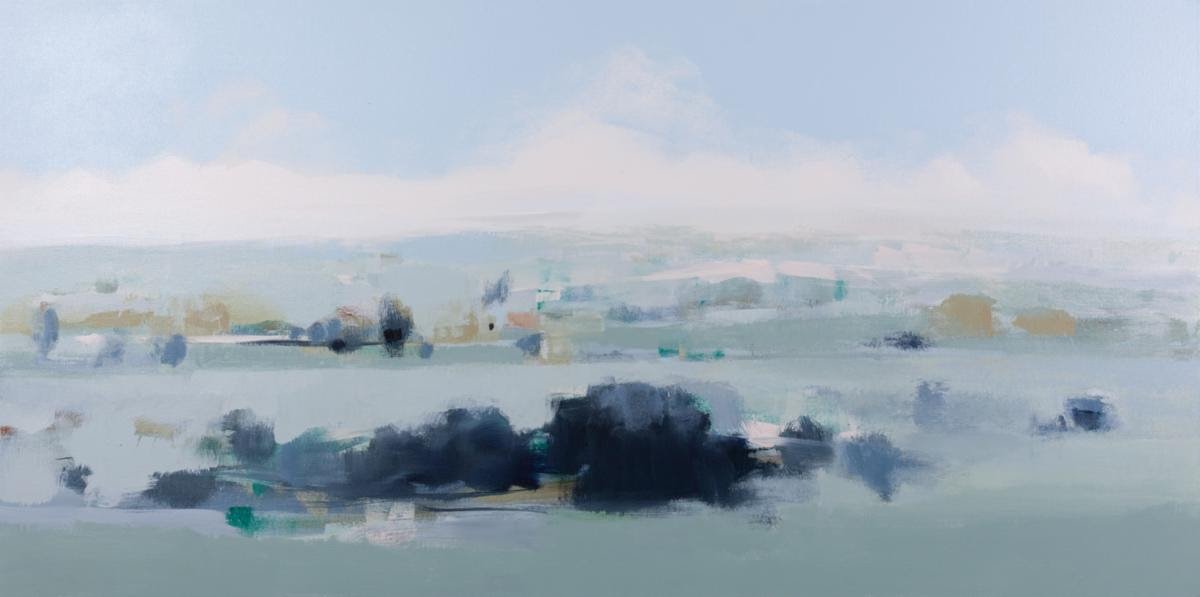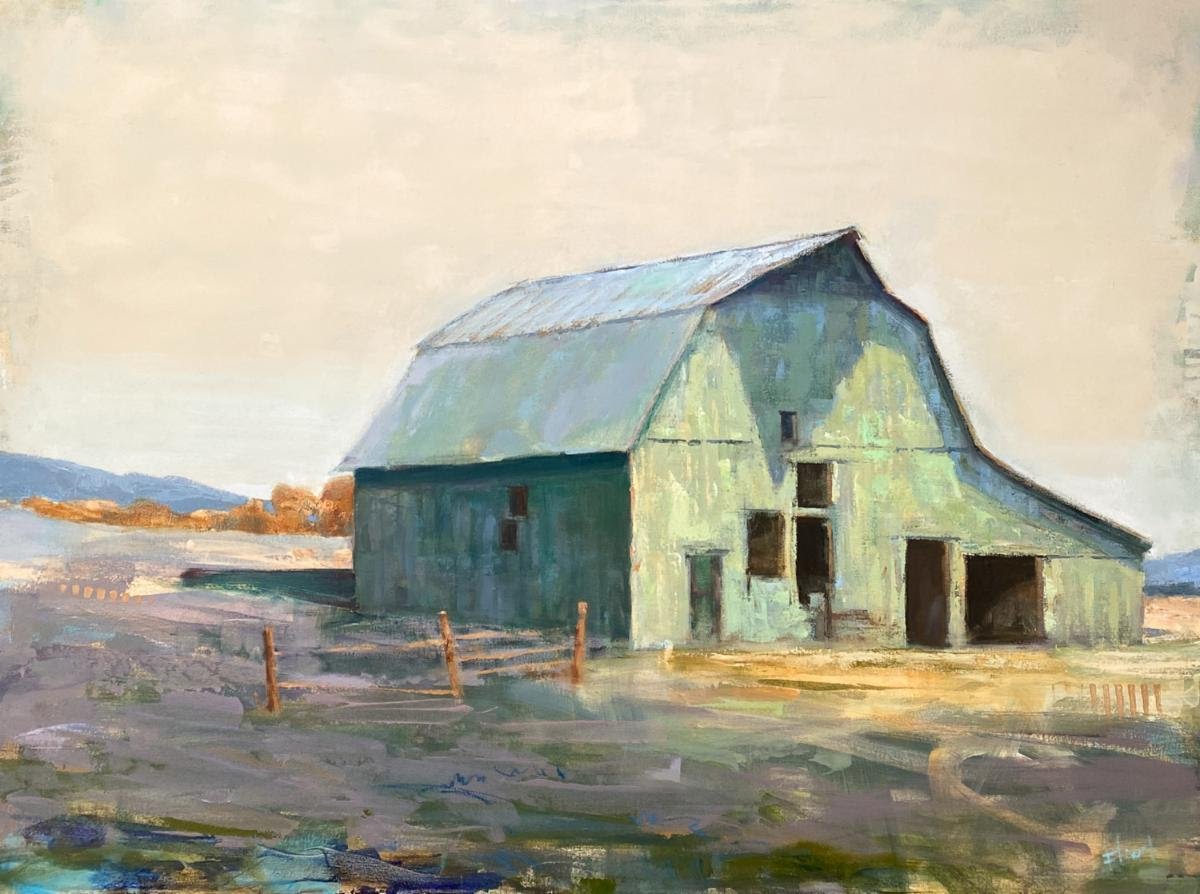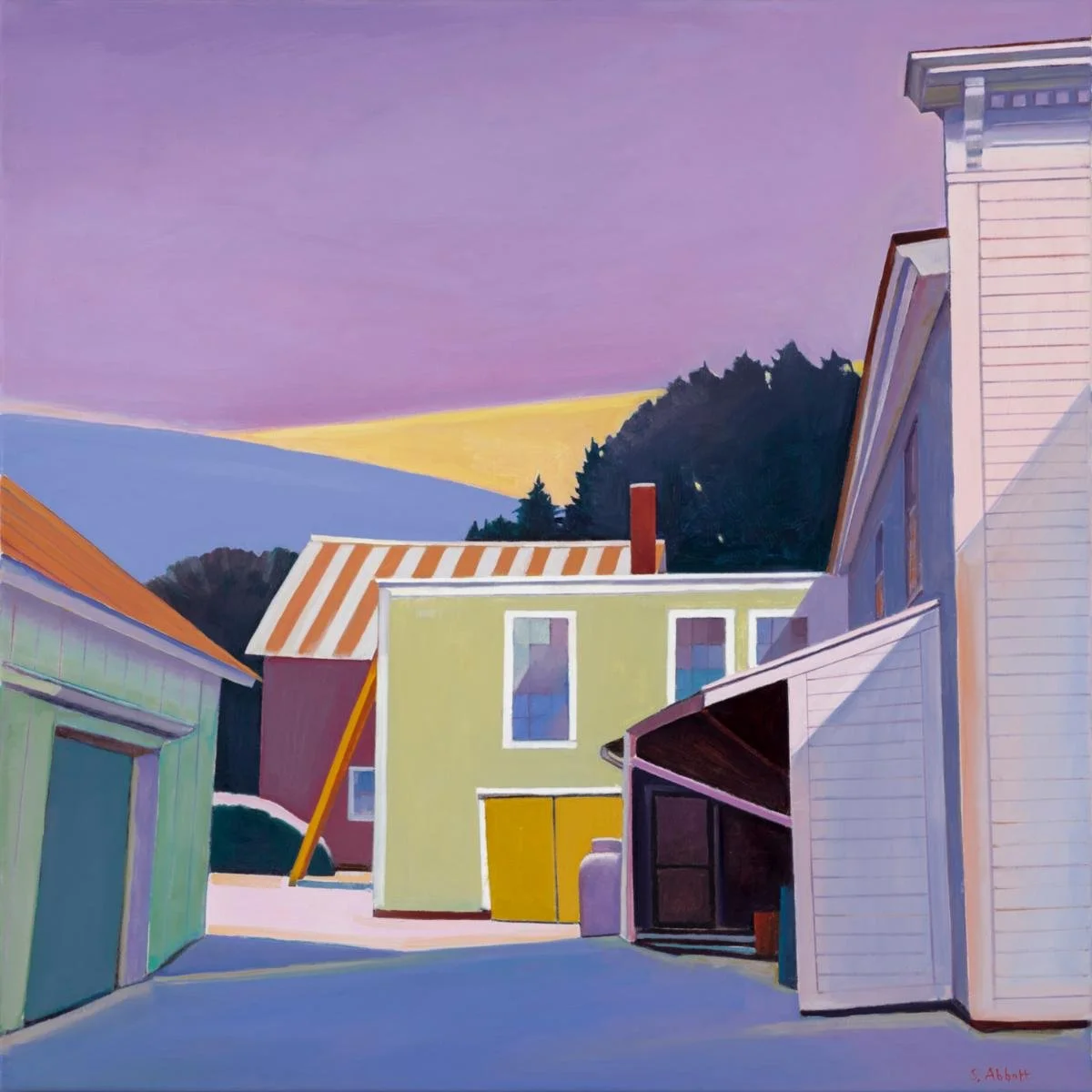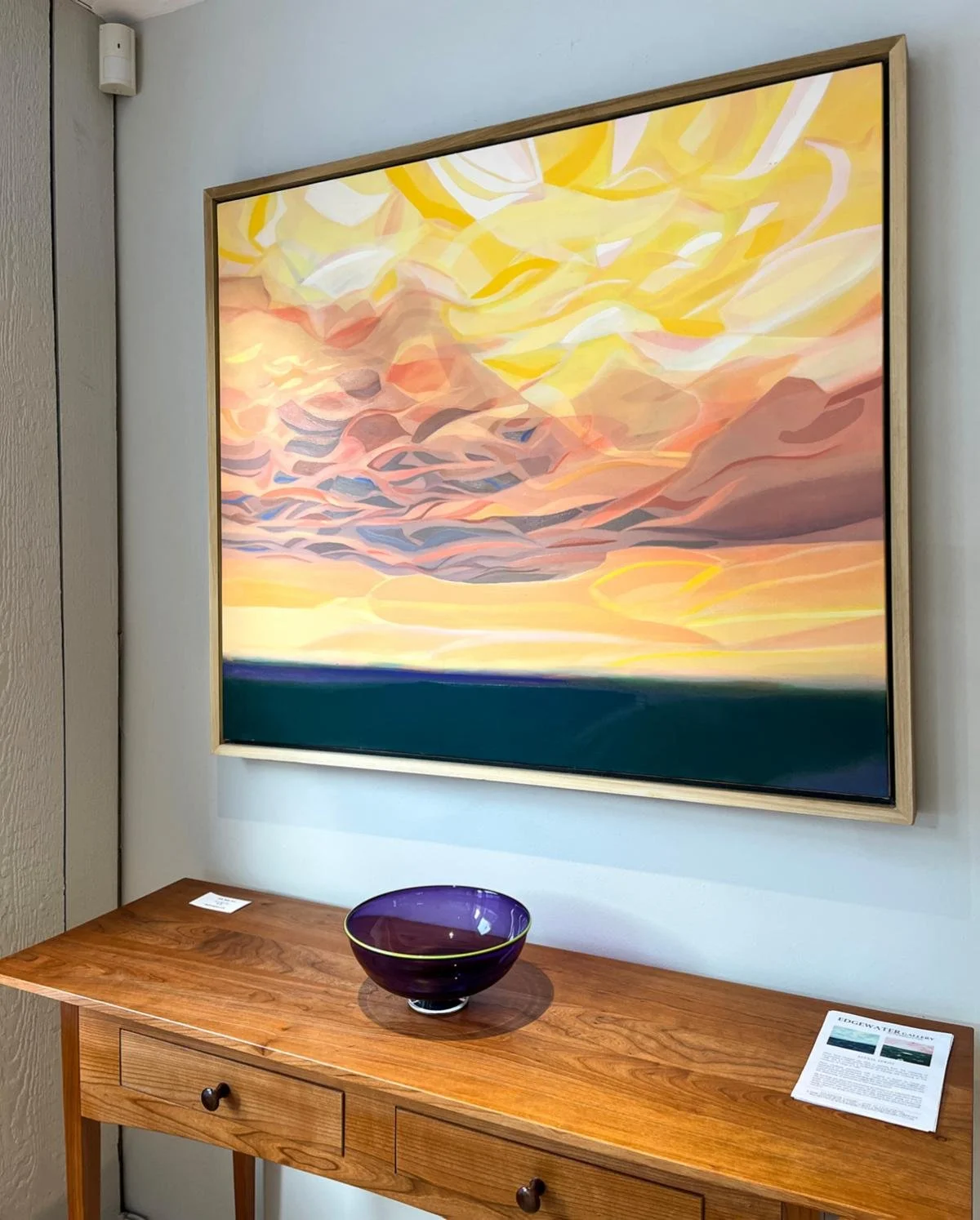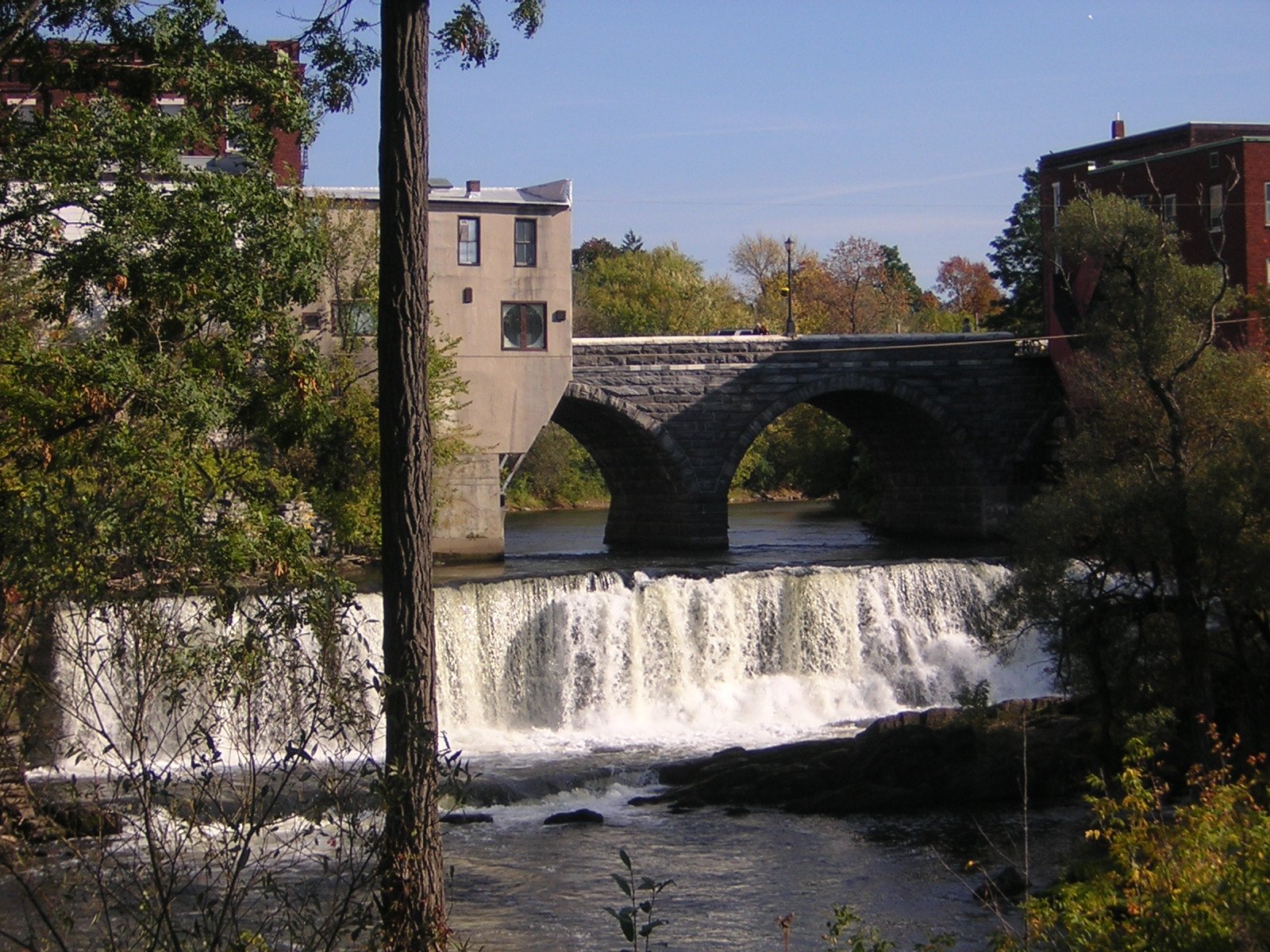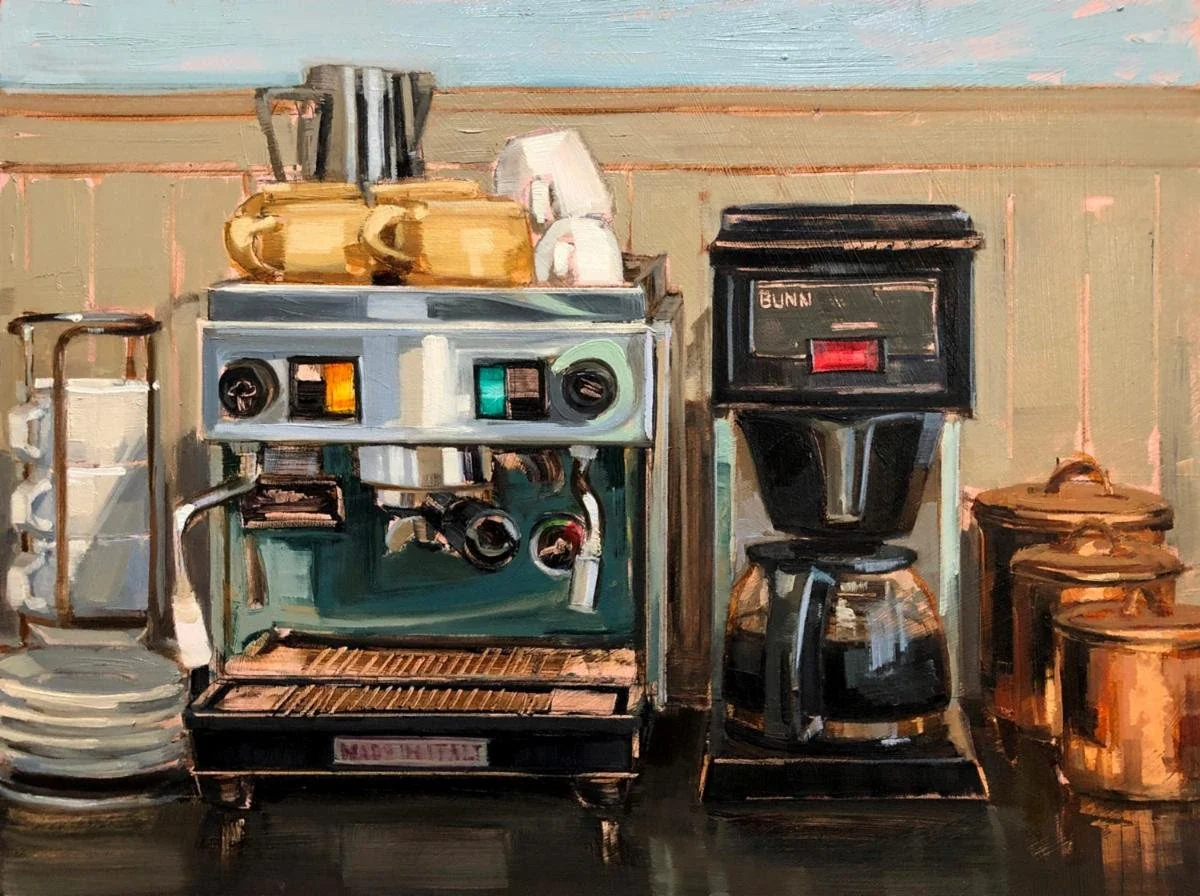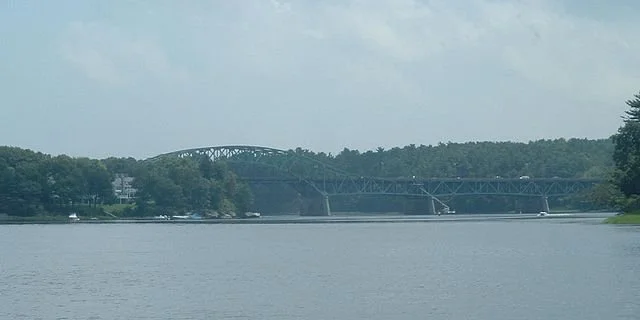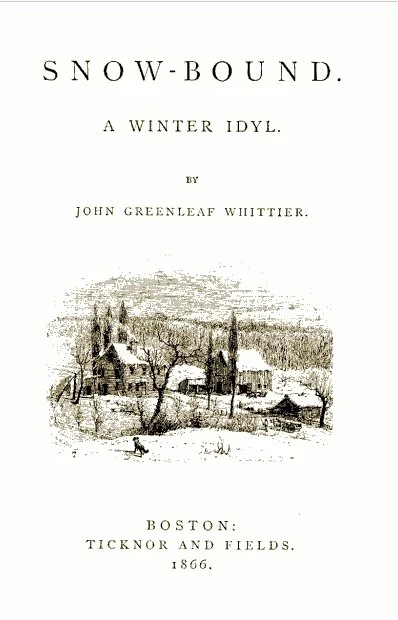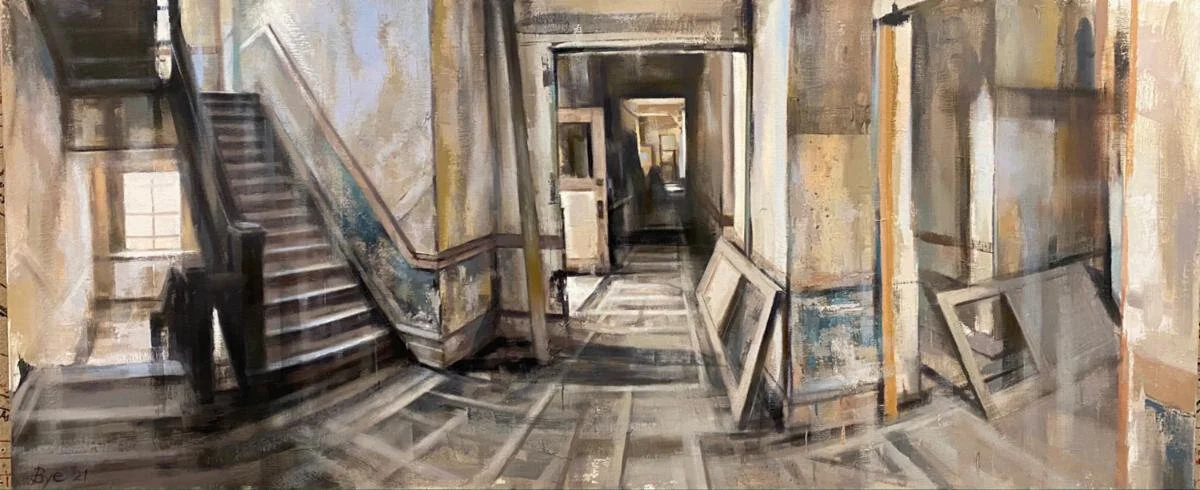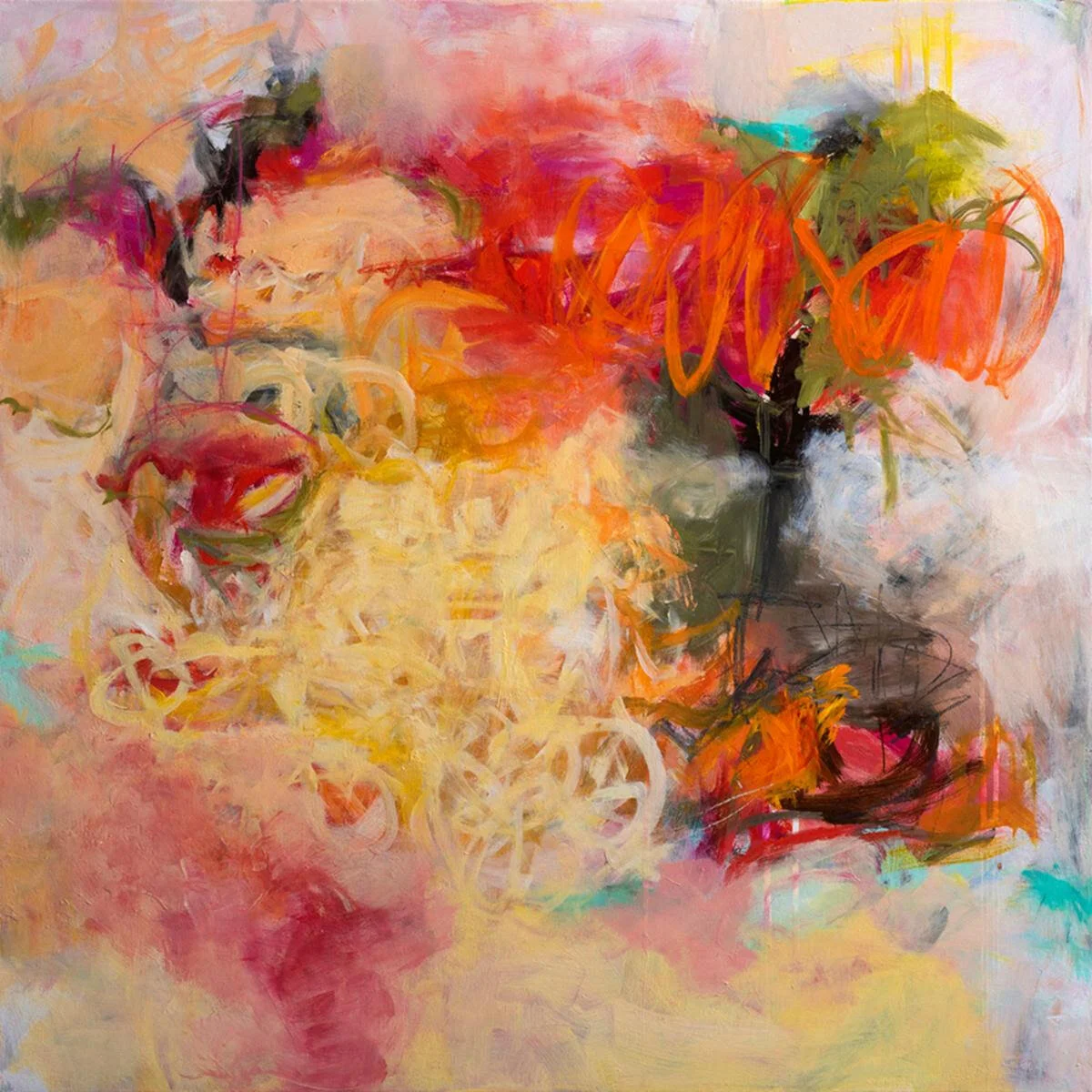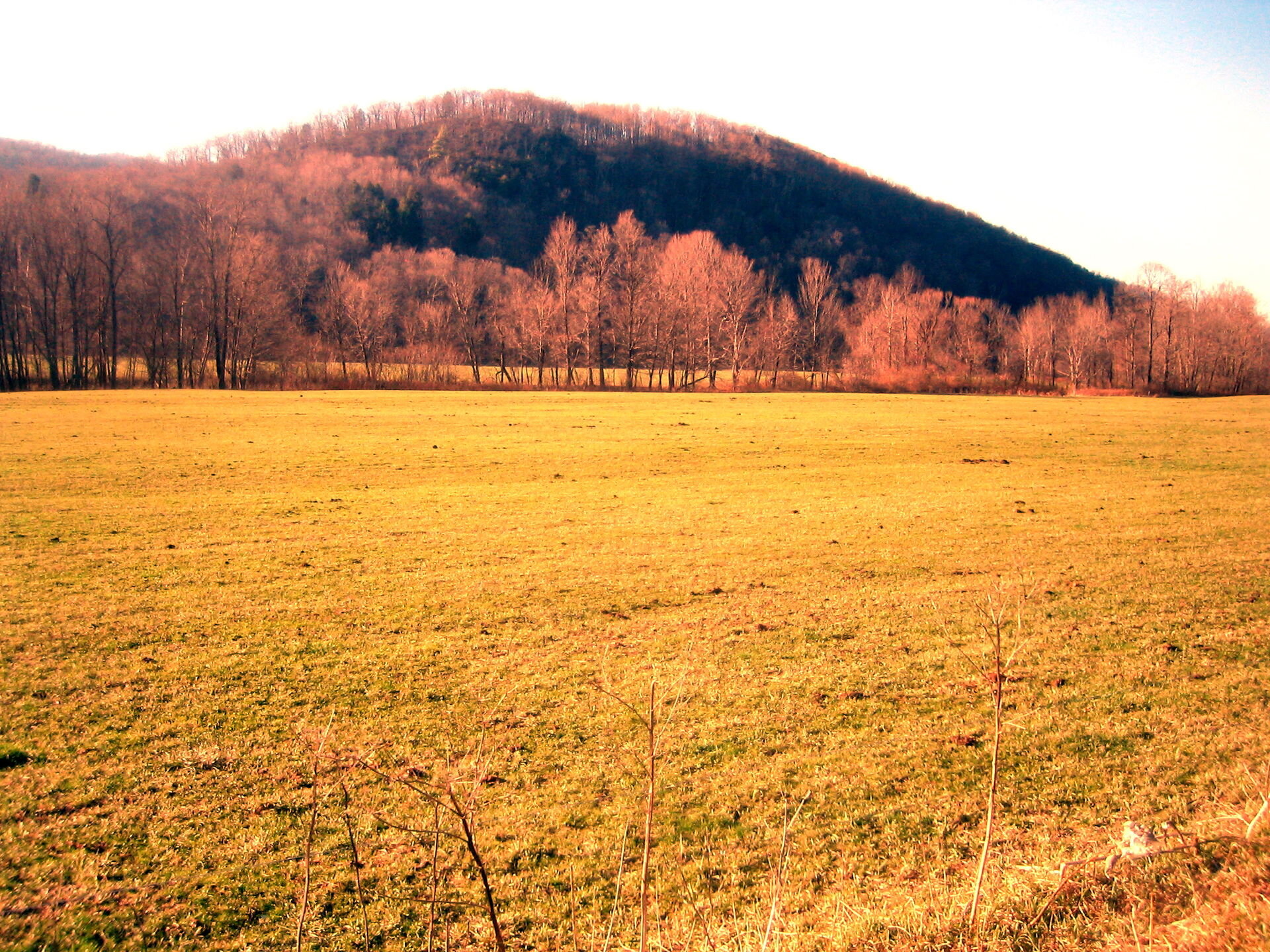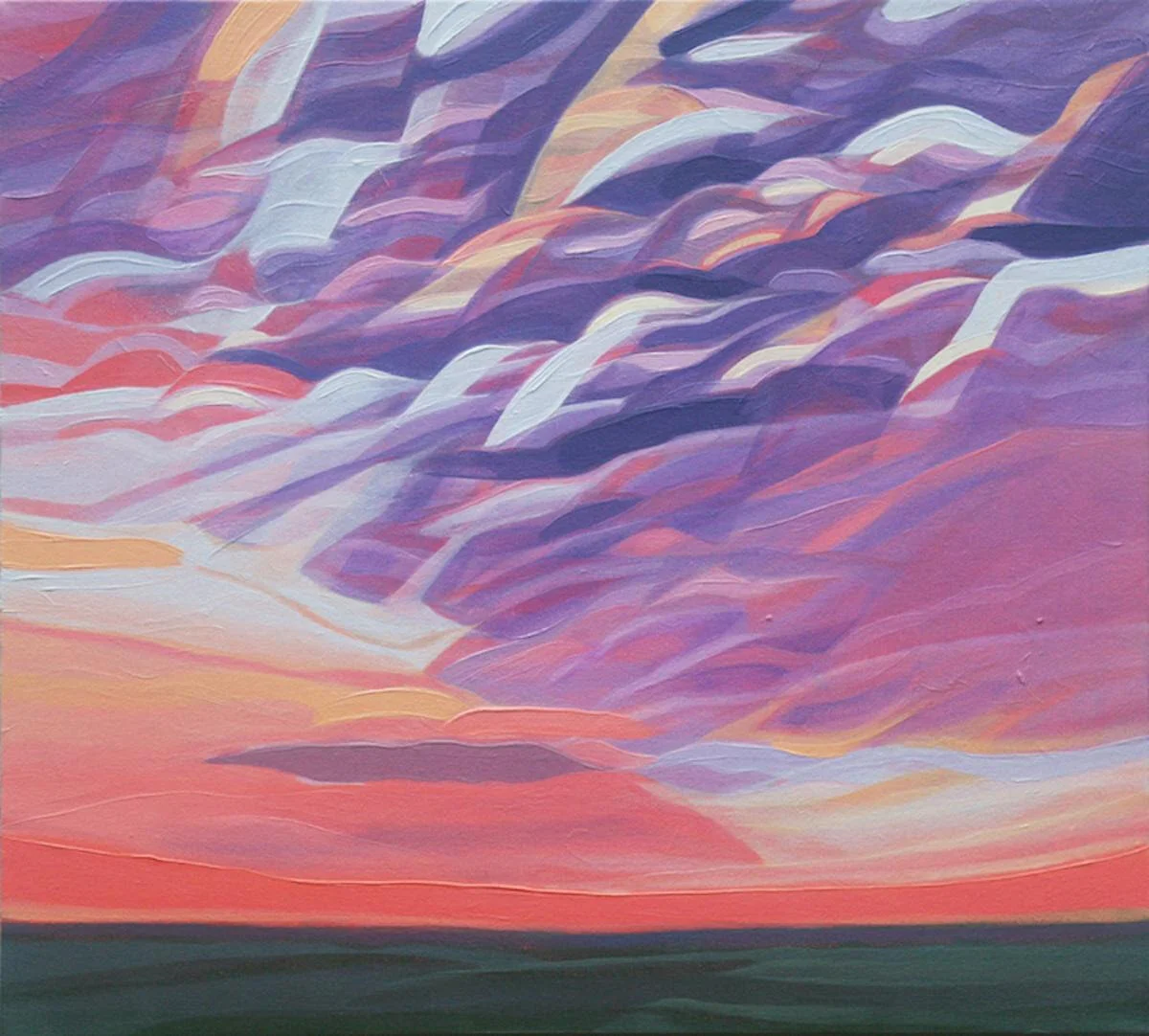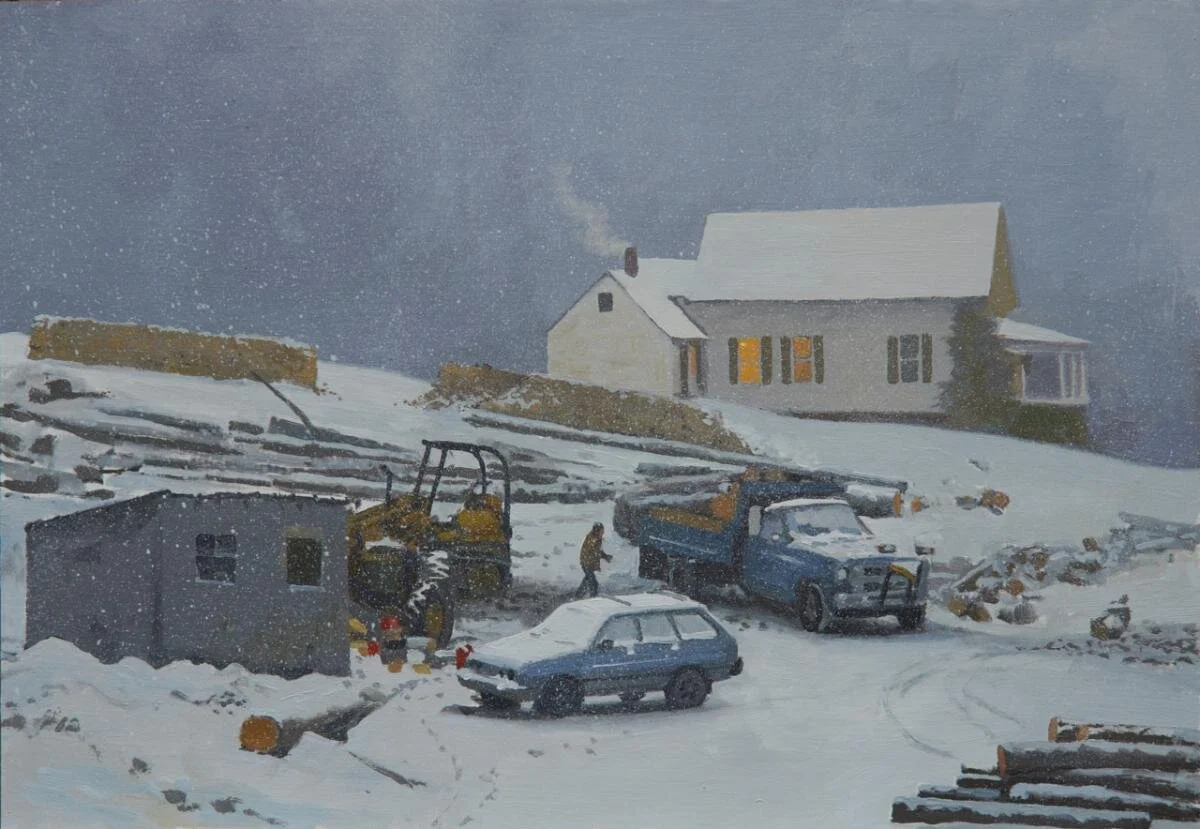
'Sameness and difference'
”Reconfiguration #2’’ (acrylic on canvas), by Rupert, Vt.-based artist Jane Davies, at Edgewater Gallery, Middlebury, Vt.
She says on her Web site:
“No matter what format or style my work takes, the pivot point of my visual explorations is sameness and difference. I like assembling a collection of visual elements that are markedly different from each other, like putting together a dinner party of people that have wildly different backgrounds and interests, to see what happens. I want to be surprised by the conversations or juxtapositions of my visual cast of characters, and then see how I can relate them to one another formally.’’
Bucolic and unprofitable
”The Aqua Biscayne’’ (oil on canvas), by Hartland, Vt.-based William B. Hoyt, at Edgewater Gallery, Middlebury, Vt.
The wonderful (especially in name) Skunk Hollow Tavern, in Hartland, Vt. It was built around 1790.
— Photo by John Phelan
Faith and sex in New England
The Congregational Church of Middlebury, Vt.
— Photo by Kenneth C. Zirkel
— Photo by Ms Sarah Welch
“In New England, especially, [faith] is like sex. It's very personal. You don't bring it out and talk about it. “
— Carl Frederick Buechner (born 1926), American writer and Presbyterian minister. He lives in Vermont. He describes his area:
“Our house is on the eastern slope of Rupert Mountain, just off a country road, still unpaved then, and five miles from the nearest town ... Even at the most unpromising times of year – in mudtime, on bleak, snowless winter days – it is in so many unexpected ways beautiful that even after all this time I have never quite gotten used to it. I have seen other places equally beautiful in my time, but never, anywhere, have I seen one more so.’’
In Rupert, Vt.
‘Patterns of occupation’
”Salt Marsh Skiff’’ (archival pigment print), by Shelburne, Vt.-based Jim Westphalen, in his show “Land & Tide: Scenes From New England,’’ at Edgewater Gallery, Middlebury, Vt., through Aug. 9.
His Web site says:
“Jim Westphalen has always had an affinity for the built landscape — those features and patterns reflecting human occupation within the natural surroundings. His current body of work, entitled “Vanish,’’ is an ongoing narrative that speaks to the decay of iconic structures across rural America. Inspired by such painters as Andrew Wyeth, Edward Hopper and A. Hale Johnson, Jim’s photographs open like windows to a world that is rapidly disappearing before our eyes. He captures his dynamic images using a vintage 4x5 view camera adapted for digital capture and then creates his large-scale archival prints using a variety of acid-free rag papers.
Largely self-taught, Westphalen has been a professional photographer for over 30 years. Born and raised on Long Island, in 1996 he moved to Vermont to be closer to the rural landscape that he loves.’’
At Shelburne Farms, a nonprofit education center for sustainability, a 1,400-acre working farm and National Historic Landmark on the shores of Lake Champlain in Shelburne. The property is nationally significant as a well-preserved example of a Gilded Age "ornamental farm", developed in the late 19th Century with architecture by Robert Henderson Robertson and landscaping by Frederick Law Olmsted.
At least in your memory
“About a White House” (oil on panel), by Tracy Everly, at Edgewater Gallery, Middlebury, Vt.
‘Construct an ending’
“An Interesting Light’’ (oil on canvas), by Julia Purinton, of Warren, Vt., (see below) at Edgewater Gallery, Middlebury Vt.
The gallery says:
Ms. Purinton “blends the distinguishable with the imagined, creating dreamlike landscapes in oil. The context of time and place for each work is gracefully ambiguous allowing the viewer to interpret the composition in a personal way.
“Setting a mood with her soft, subtle palette, Purinton begins a story and leaves the ending for us to construct.’’
At the Sugarbush ski area, in Warren, in February. The Warren area is a major recreational and second-home area, anchored by Sugarbush. It also has many artists.
— Photo by TaraMGordon -
In 1910, way before the ski boom.
Too wet to plant yet
“Spring Field’’ (acrylic on canvas), by Hannah Bureau, in her show “Open Air,’’ at Edgewater Gallery, Middlebury, Vt. through May 22. A native of Paris, she’s now based In Waltham, Mass.
Needs replenishment
“Sustenance’’ (oil on canvas), by Kay Flierl, at Edgewater Gallery, Middlebury, Vt.
Purple P.M.
“Violet Afternoon’’ (oil on canvas), by Susan Abbott, at Edgewater Gallery, Middlebury, Vt. She live in northern Vermont.
‘The illusiveness of time’
Painting by Alexis Serio in her show “Time and Memory,’’ at Edgewater Gallery at the {Otter Creek} Falls, Middlebury, Vt., through March 31.
She calls her show “stories of beauty that I wish to share with the viewer”.
“My paintings are philosophical and formal investigations about the visual perception of light and color, the personal experience of remembering and inventing, and the natural illusiveness of time."
The gallery says:
“The viewer recognizes these as landscapes. Serio gives us a horizon line as a foothold for this but beyond this reference the compositions are investigations of color and shape, rhythmically layered to represent perceptions of light, land, and memories.’’
Otter Creek Falls, in Middlebury
Lithograph of Middlebury from 1886 by L.R. Burleigh with list of landmarks
Kitchen art
“Home Brew” (oil on panel), by Rachel Wilcox, in the group show “Small Works, Big Impacts,’’ at Edgewater Gallery, Middlebury, Vt., starting Nov. 15.
The gallery says the five pieces she has delivered to the show “further explore her restaurant kitchen theme but also include vignettes from her own kitchen. Each painting gives the viewer an intimate, and compositionally intriguing snapshot of parts of working kitchens.’’
She lives and works in Amesbury, Mass., on the north side of the Merrimack River.
From The Boston Cooking School magazine of culinary science and domestic economics in 1896
The Whittier Memorial Bridge over the Merrimack River. The bridge, named for the once famous Massachusetts poet and abolitionist John Greenleaf Whittier (1807-1892), who grew up on a farm in nearby Haverhill, connects Amesbury and Newburyport.
'Histories held captive'
“Intersection” (oil on canvas), by Jeff Bye, in his show “Shenandoah,’’ at Edgewater Gallery, Middlebury, Vt., through Oct. 31.
The gallery says:
“In Vermont we have landscape painters who seek to capture and honor the natural beauty of our state. Bye has a similar focus, but his landscapes are the interior landscapes of buildings that once were inhabited and were vital to the towns and communities in which they stood but now are vacant, their histories held captive behind locked doors and boarded windows.’’
Too foliage-oriented?
“Nope, Not This” (acrylic on canvas), by Rupert, Vt.-based Jane Davies, at Edgewater Gallery, Middlebury, Vt.
Countryside in eastern Rupert.
Rupert is the filming location for the syndicated PBS cooking show Cook's Country. The white country house, known as Carver House, has been used as the show’s set. Christopher Kimball, former executive producer and host of Cook's Country, has a house nearby.
‘Adding and subtracting layers’
“Railroad Ties” (oil and cold wax on panel), by Helen Shulman, at Edgewater Gallery, Middlebury, Vt.
The gallery says:
“Helen Shulman’s abstract, mixed-media paintings draw on her interest in the manipulation of surface texture, color, and mark making, and are compositions that may have their origins in the landscape or the figure but become about the process of adding and subtracting layers, creating texture, and interest that will draw the viewer in and through each piece.’’
And then go back to bed
“Rise’’ (oil on canvas), by Alexis Serio, at Edgewater Gallery at the Falls, Middlebury, Vt.
The gallery says:
“Serio creates ethereal, abstract landscapes. Through her color choices, and layering of tones and simplified shapes the artist’s compositions become vast and dreamlike. They glow with shifting light and a sense of place. Serio’s work strives to evoke remembrance of something familiar for the viewer. Billowing skies meet rolling planes of landscape in this beautiful new series.’’
Ebb and flow
“Each Piece is Different’’ (acrylic on canvas), by Charlie Bluett, at Edgewater Gallery, Middlebury, Vt.
Charlie Bluett’s studio is in the Northeast Kingdom of Vermont. He was born in England and educated at Eton College there, and has exhibited extensively in the United Kingdom and the United States.
The gallery says:
“Bluett is an abstract painter who is inspired by the ebb and flow of the natural processes of the earth. Using this as his reference, his interest is then in the process of building form, color, and surface texture into large scale compositions that are bold and dynamic, but also subtle in their shifting shapes and tones. His works contain elements that pay homage to the techniques of the old masters, blended with abstract expressionism and the colorfield painting of the contemporary names of our time.’’
Panoramic view of Willoughby Notch and Mount Pisgah, in the Northeast Kingdom of Vermont.
— Photo by Patmac13
Before the roads are closed
“The Last Truckload,” by William B. Hoyt, at Edgewater Gallery, Middlebury, Vt.
See:
http://www.wmbhoyt.com/paintings/
and:
https://edgewatergallery.co/
'Fragmented realism'
Collage made entirely of paper cut from recycled magazines, by Betsy Silverman, in her show “Cut It Out,’’ at Edgewater Gallery at Middlebury Falls, Middlebury, Vt. The Boston-based artist calls her work “fragmented realism,’’ depicting classic New England scenes in a new way.
See:
http://www.betsysilverman.com/
and:
https://edgewatergallery.co/
'Our Town' in our town
The play Our Town, by Thornton Wilder, was first produced in 1938. It's set in a small New Hampshire town around the turn of the 20th Century.
"In Middlebury’s production of Our Town,
three local churches served as the stage:
Baptist for the first act; Methodist, the second;
And St. Stephen’s Episcopal (mine) for the third.
Between the acts, we followed ushers
who carried lanterns past stages vignettes:
two lovers spooned behind the bandstand on the green,
a horse and buggy meandered down the street,
and in the window of the barber shop
a barber stood with razor and strop''
-- From "Our Town: Middlebury, Vermont,'' by Jennifer Bates

